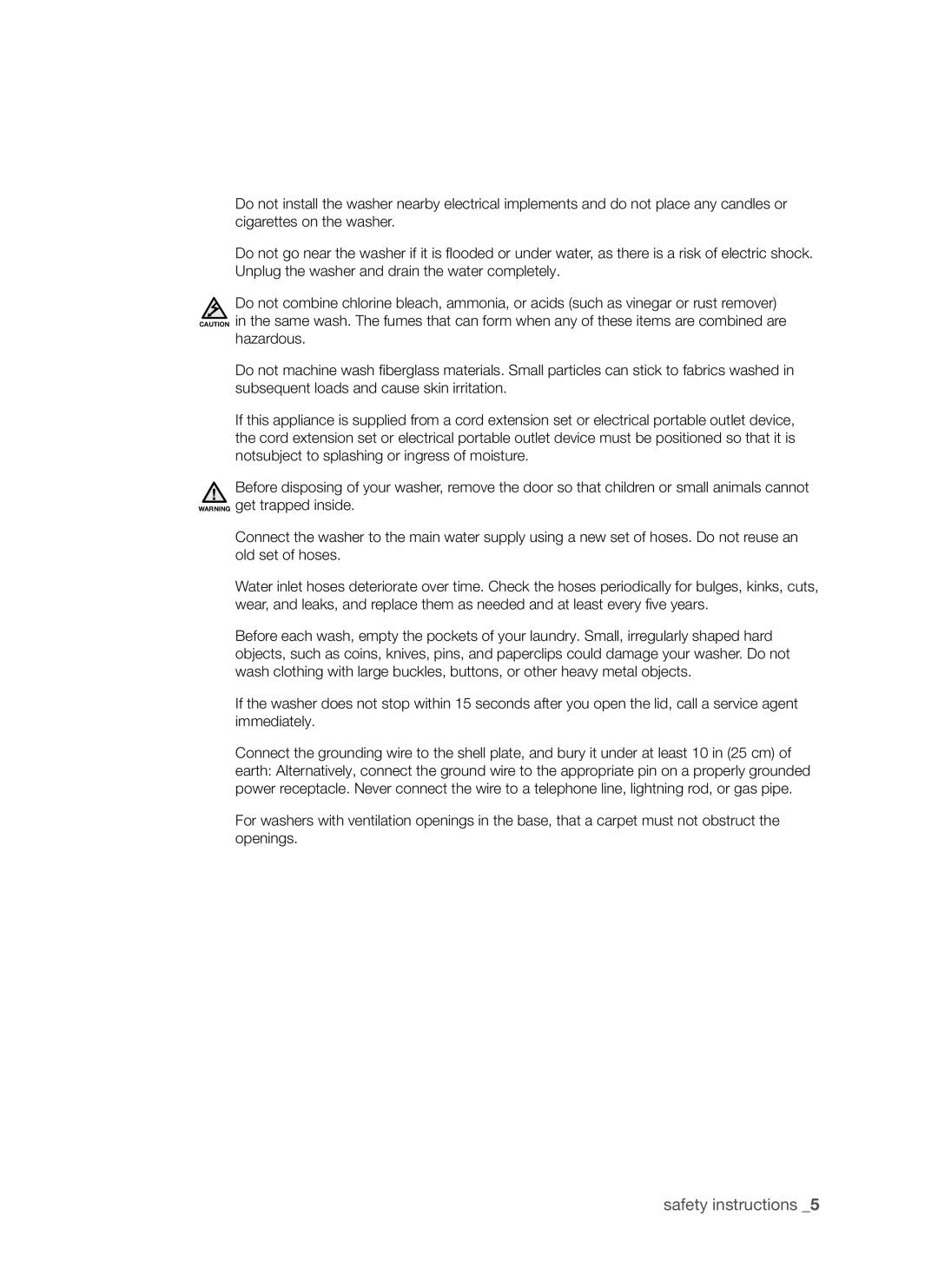Do not install the washer nearby electrical implements and do not place any candles or cigarettes on the washer.
Do not go near the washer if it is flooded or under water, as there is a risk of electric shock. Unplug the washer and drain the water completely.
Do not combine chlorine bleach, ammonia, or acids (such as vinegar or rust remover) CAUTION in the same wash. The fumes that can form when any of these items are combined are
hazardous.
Do not machine wash fiberglass materials. Small particles can stick to fabrics washed in subsequent loads and cause skin irritation.
If this appliance is supplied from a cord extension set or electrical portable outlet device, the cord extension set or electrical portable outlet device must be positioned so that it is notsubject to splashing or ingress of moisture.
Before disposing of your washer, remove the door so that children or small animals cannot WARNING get trapped inside.
Connect the washer to the main water supply using a new set of hoses. Do not reuse an old set of hoses.
Water inlet hoses deteriorate over time. Check the hoses periodically for bulges, kinks, cuts, wear, and leaks, and replace them as needed and at least every five years.
Before each wash, empty the pockets of your laundry. Small, irregularly shaped hard objects, such as coins, knives, pins, and paperclips could damage your washer. Do not wash clothing with large buckles, buttons, or other heavy metal objects.
If the washer does not stop within 15 seconds after you open the lid, call a service agent immediately.
Connect the grounding wire to the shell plate, and bury it under at least 10 in (25 cm) of earth: Alternatively, connect the ground wire to the appropriate pin on a properly grounded power receptacle. Never connect the wire to a telephone line, lightning rod, or gas pipe.
For washers with ventilation openings in the base, that a carpet must not obstruct the openings.
